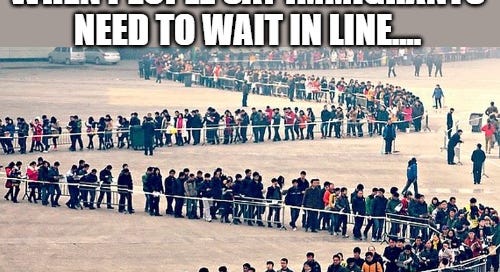Either an I-130 petition (for FB immigration) or an I-140 petition (for EB immigration) can be filed at any time, all year round.
Either an I-130 petition or I-140 petition can be approved year-round. The time it takes from when you file the petition to when it is approved is known as the USCIS processing time. The processing time is simply the time it takes for the petition to be approved. It is NOT the time it takes to obtain a green card.
Neither an I-130 petition nor an I-140 petition confer “status.” What this means is that filing an I-130 or filing an I-140 and getting an I-130 approved or an I-140 approved does not give the sponsored individual authorization to be in the US or to work in the US. This single fact is misunderstood by many, many people.
An I-130 petition approval and an I-140 petition approval confer eligibility (not status), and a place in the queue.
An I-130 petition and an I-140 petition do CONFER immigrant intent and must be disclosed on a DS-160 visa application form. If you are the beneficiary of an I-130 or an I-140, you have demonstrated to the U.S. government your “intent” to reside in the United States indefinitely and your intent to obtain green card status.
Both an I-130 petition and an I-140 petition, when approved, establish a priority date and a preference category.
The priority date on an I-130 is when the I-130 was filed.
The priority date on an I-140 is when the I-140 is filed, UNLESS the I-140 petition is a PERM-based I-140 and then the priority date is the date when the PERM labor certification application was filed.
The priority date and preference category are like your ticket at the neighborhood deli/meat market, and you can refer to the monthly Visa Bulletin to understand how far you are from being “current.” The Visa Bulletin is the butcher at the meat market shouting “Next - Number 51!”
Some I-130 petitions are for “immediate relatives” and there is no annual limit (or quota) for immediate relatives so the sponsored family members who are immediate relatives are “always current.” Spouses of U.S. citizens and and parents of U.S. citizens are “immediate relatives” - so are qualifying children.
Other I-130 petitions are subject to the FB quotas or annual limits on how many green cards may be issued.
All EB petitions (I-140 petitions) are subject to the EB quotas, although occasionally some of the EB categories are current for some nationalities.
As noted, I-130 petitions and I-140 petitions can be filed all year round without regard to the quota system (annual limit) but the final stage green card process cannot be pursued until “your priority date is current.”
The final stage green card process for certain qualifying people in the United States is known as I-485 adjustment of status, whereas the final stage of the green card process for people outside the United States is known as immigrant visa processing at a U.S. Consulate.
To proceed on I-485 adjustment of status or the immigrant visa process at a U.S. consulate abroad, you must study your preference category AND nationality.
NATIONALITY (or country of birth) is relevant because in addition to the quotas based on preference category, there are separate “per country” limits to prevent people from any one country from taking all the green cards.
So after you get your head around the preference category and your nationality, then you can look at the Visa Bulletin. Unless you have become thoroughly confused by now and then you might just say ‘forget it’.
The December 2024 Visa Bulletin can be found here.
The December 2024 Visa Bulletin has two separate charts for FB (Family-Based) immigration and two separate charts for EB (Employment-Based) immigration.
Chart B is the more favorable chart and only has relevance to people in the United States who are trying to apply for “adjustment of status.” Chart B is potentially useful for FILING an I-485 adjustment of status application but does not dictate the approval of an I-485.
Chart A is the real Chart that determines when green cards are issued, so looking at the December 2024 Visa Bulletin (Chart A) for EB immigration, here is what you can see:
The first column is often referred to as “RoW” or “Rest of World.” What this means is that in December 2024, someone who is chargeable (born in) any other country not listed, so any other country besides China, India, Mexico, Philippines, he or she must have a priority date of before March 15, 2023, in the EB-2 category to obtain a green card.
The letter “C” means “Current” so there is no backlog at all for the 1st preference people in RoW, or Mexico, or Philippines, meaning that the annual limit for that preference category and those nationalities has no backlog and I-485 applications can be filed any time.















Share this post